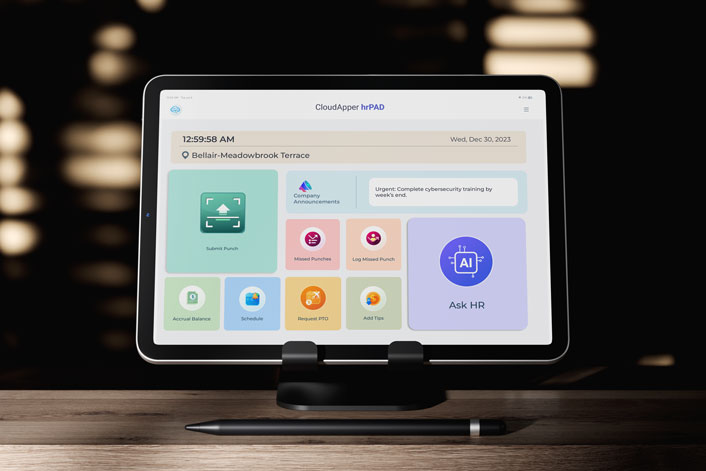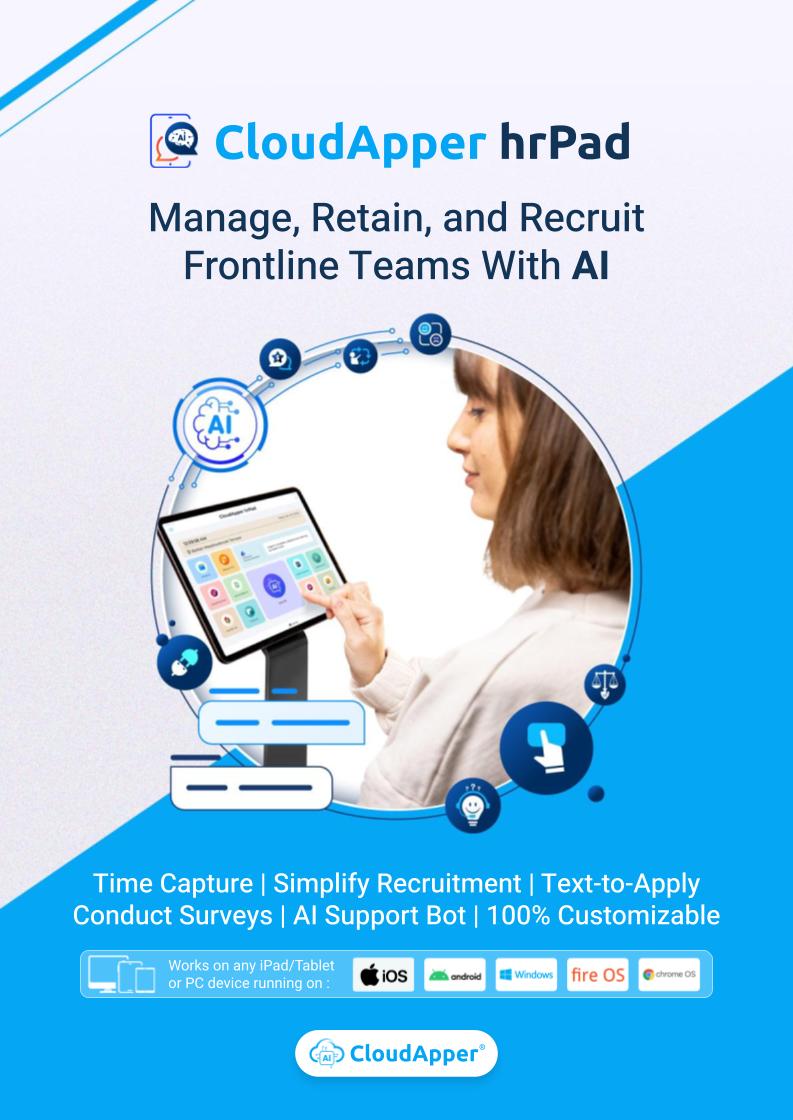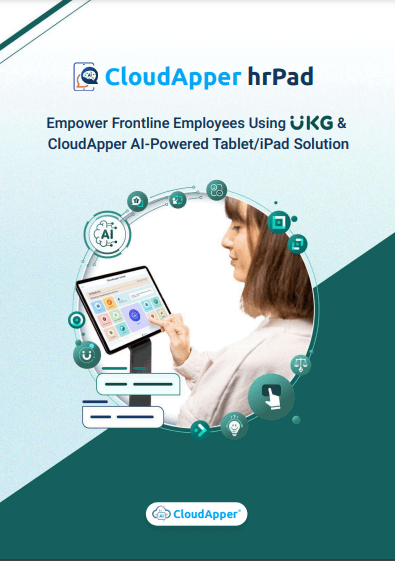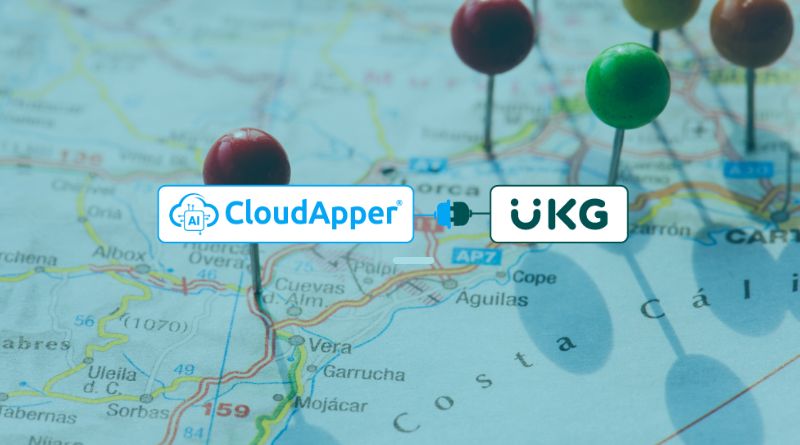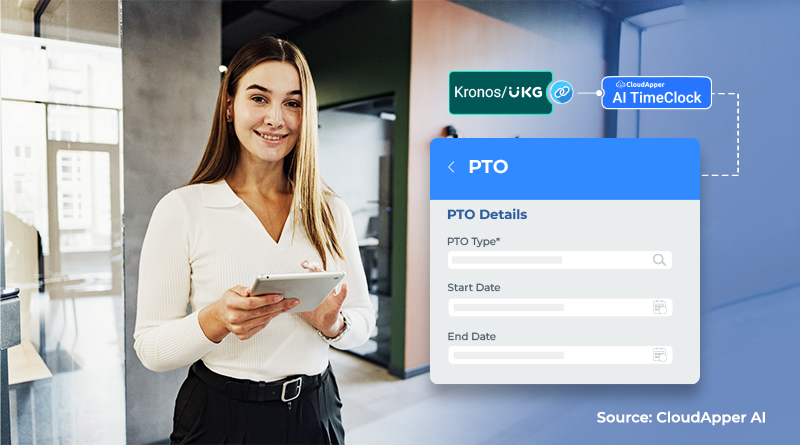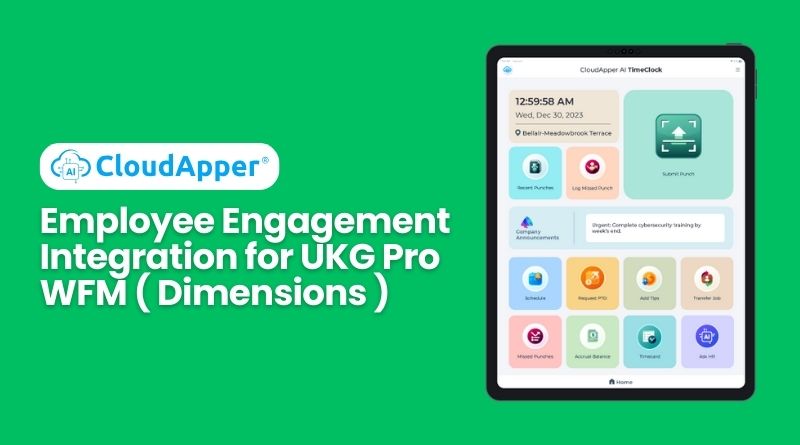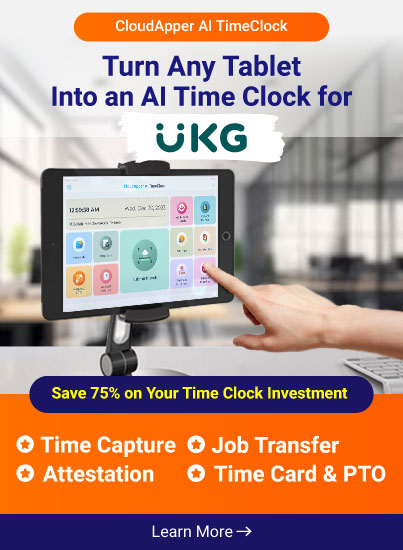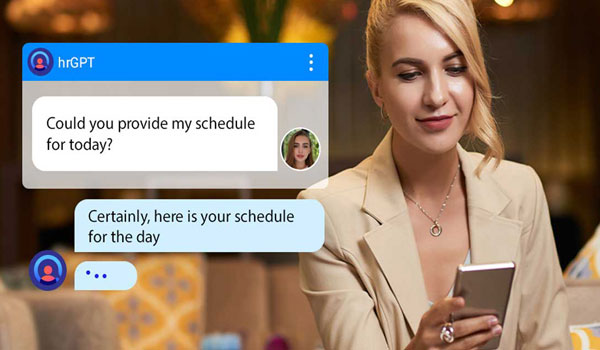Unleash HR's strategic power with CloudApper hrPad & UKG integration! Automate tasks, empower employees, and fuel growth with AI-driven solutions. Revolutionize productivity and elevate your workforce for lasting organizational success
Table of Contents
The success of any business is profoundly rooted in its people. Employees are the most valuable assets, driving innovation, productivity, and, ultimately, the organization’s success. However, HR professionals often spend around 41% of their time on transactional activities, leaving minimal room to concentrate on creative and consultative endeavors that foster a happy, engaged, and efficient workforce. To unlock the full potential of their people, HR needs to shift focus. HR professionals can significantly impact business success by reducing the time spent on administrative tasks and reallocating resources to strategic initiatives. This transformation begins by eliminating inefficiencies within HR operations and harnessing the power of AI-powered HR service delivery solutions like CloudApper hrPad with the UKG ecosystem to automate manual processes, enabling HR to delve into strategic, value-driven work that amplifies the organization’s overall success.
What Kills HR Productivity?
Several factors can significantly impede HR productivity within an organization. Some key elements that often contribute to reduced HR productivity include:
Manual and Repetitive Tasks: HR professionals frequently spend a substantial amount of time on manual and repetitive administrative tasks such as data entry, paperwork processing, and managing employee records. These activities consume valuable time that could otherwise be utilized for strategic and high-impact HR initiatives.
Legacy Systems and Outdated Processes: Outmoded HR systems and processes that rely on outdated technology can hinder efficiency. These systems may lack integration capabilities, leading to disjointed workflows, data inconsistencies, and a lack of real-time insights, slowing down HR operations.
Compliance and Regulatory Demands: HR teams must stay updated and compliant with ever-evolving employment laws, regulations, and compliance standards. The time and effort required to navigate these complex legal frameworks can overwhelm HR professionals, diverting their attention from more proactive and value-adding tasks.
Overwhelming Administrative Workload: The sheer volume of administrative tasks, including managing employee onboarding, offboarding, payroll, benefits administration, collecting employee feedback, and leave management, can overwhelm HR professionals, leaving little time for strategic thinking or engaging with employees to enhance their experience.
Lack of Automation and Technology Utilization: Failure to leverage automation tools and advanced HR technology solutions can restrict efficiency gains. Embracing AI-powered tools and software that streamline processes, automate routine tasks, and provide data-driven insights is crucial for enhancing HR productivity and also helps to reduce employee turnover.
Automating Regular HR Tasks with AI-powered HR Service Delivery
In the quest to optimize HR productivity, integrating AI-powered HR service delivery solutions like CloudApper hrPad within the UKG ecosystem is a transformative step. These solutions are pivotal in liberating HR professionals from time-consuming administrative burdens, allowing them to focus on strategic initiatives that drive organizational growth.
Employee Self-Service Empowerment
CloudApper hrPad enables employees to take charge of routine tasks through its intuitive employee self-service features. By providing a user-friendly interface accessible via tablets, smartphones, or other devices, employees can seamlessly manage their schedules, request time off, access timecards, and obtain essential information, reducing dependency on HR for routine inquiries.
24/7 AI Assistant for Instant Support
Integrating an AI-powered HR assistant within hrPad facilitates immediate responses to employee queries. This AI assistant operates round-the-clock, offering timely and accurate information on HR policies, benefits, and other inquiries. This feature provides employees with quick resolutions and alleviates the constant demand on HR teams to address repetitive queries, making it easier for HR to empower employees.
Well-being Surveys and Feedback Collection
hrPad’s capabilities extend beyond transactional tasks by incorporating well-being surveys and feedback collection mechanisms. Periodic check-ins to gauge employees’ mental and physical well-being, coupled with anonymous feedback collection and peer feedback collection, offer valuable insights to HR teams. This enables them to proactively address concerns, fostering a more engaged and satisfied workforce.
Recruitment Automation
The platform further streamlines recruitment processes by empowering employees to share job openings within their networks. The innovative ‘Text-to-Apply’ feature also simplifies the application process, engaging candidates through AI-driven conversations tailored to specific job roles. This results in efficient candidate summary generation, reducing manual intervention in initial applicant screening.
Last Words
The evolution of HR practices is intrinsic to unleashing an organization’s true potential through its workforce. CloudApper hrPad, integrated within the UKG ecosystem, signifies a pivotal shift in HR operations, liberating professionals from the quagmire of administrative tasks to focus on strategic endeavors. By automating routine processes, providing intuitive self-service features, and leveraging AI-powered assistance, hrPad reshapes the HR landscape. This comprehensive solution optimizes productivity and enhances employee experiences, fortifying the foundation for sustained organizational growth. As HR embraces these transformative tools, it marks the inception of a future where efficiency, engagement, and innovation converge to propel businesses toward unparalleled success, underlining the importance of prioritizing people-centric strategies for organizational excellence.





